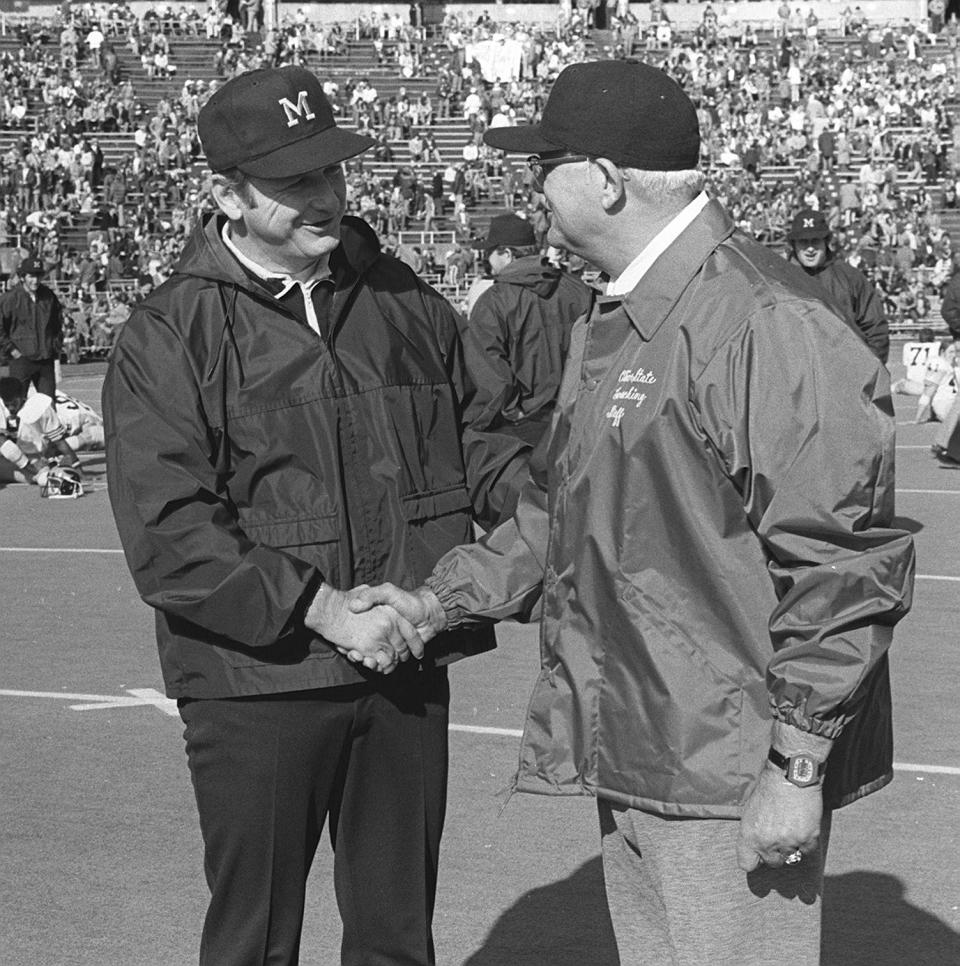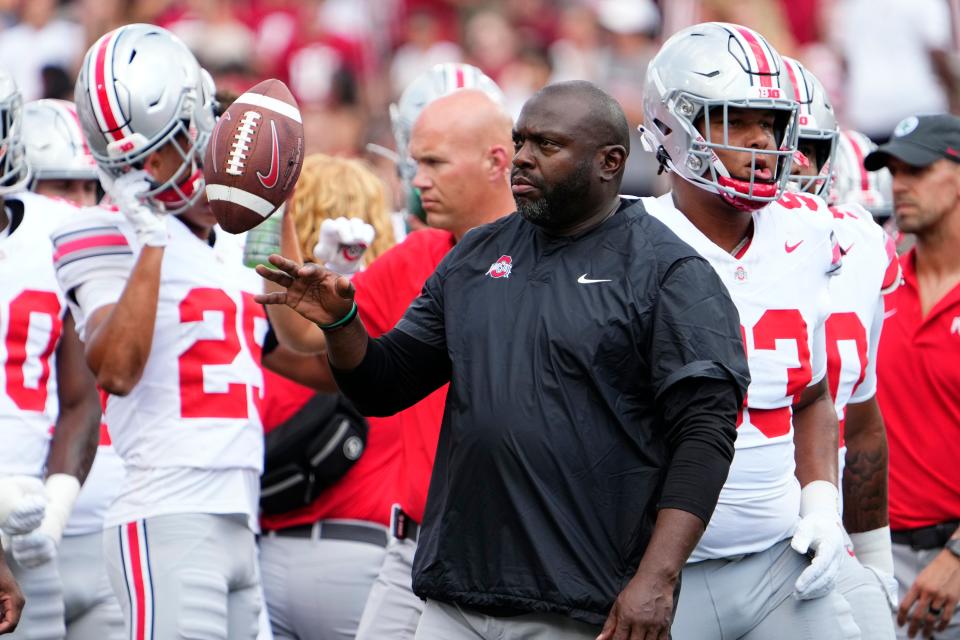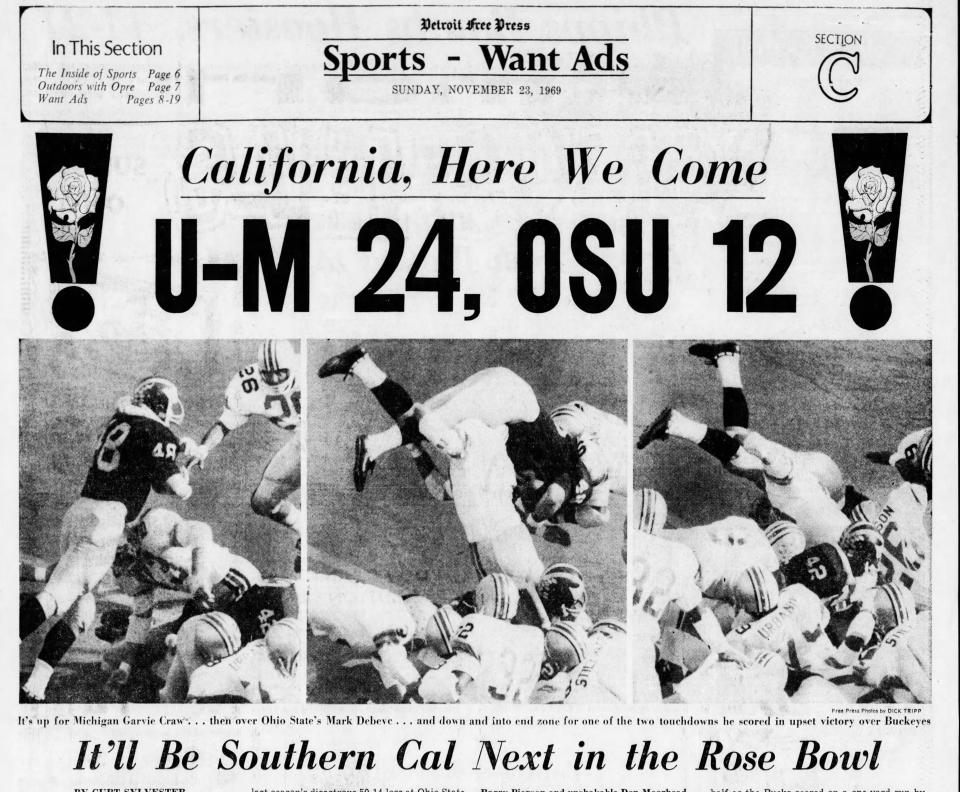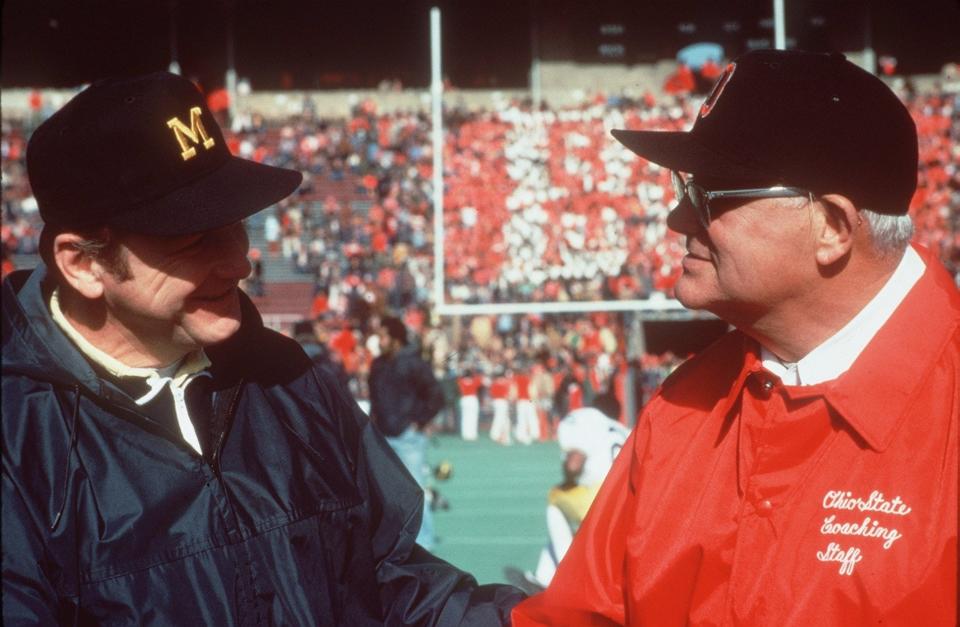Oller: Bo Schembechler not first but most famous 'traitor' to leave Ohio for Michigan
Ohio State is used to its running backs making history. Archie and his two Heismans. Hopalong. Eddie. Zeke’s 85-yard touchdown through the heart of the South. And so on.
The Buckeyes are not nearly as accustomed to watching their running backs coach enter the record books. Yet here we are. When Tony Alford waved goodbye to Ohio State Wednesday, leaving his job as running backs coach for a similar role at Michigan, he became the first OSU football coach to go directly from the Buckeyes to the Wolverines.
Mic drop.

Jaw drop, too.
Our beat writer Joey Kaufman found in the UM archives that only seven football coaches have worked for both schools. The most recent? Greg Mattison and Al Washington, who left Ann Arbor for Columbus after the 2018 season. But until Alford bolted, no Buckeyes football coach in more than a century had switched out scarlet and gray for Michigan colors – sacre maize and blue – and never in the same calendar year. (Note: Ohio State football assistant Steve Farrell went straight from OSU in 1912 to Michigan in 1913, but as a track coach; he did not help with UM football until 1915.)
You can imagine how Alford’s exit has gone over in Buckeye Nation. Ohio State fans defend Benedict Arnold as a loyal patriot compared to what they see as traitorous conduct by Alford. Michigan fans, meanwhile, see the move as added proof the Big House is the place to be.

Alford’s departure was a stunner, but it remains a mere footnote compared to the voluminous treachery of Glenn Edward “Bo” Schembechler Jr., whose breach of allegiance led to a “10-Year War.”
Bo Schembechler 'jumped' at Michigan job
Jon Falk was a Miami University student when he struck up a friendship with the school’s head football coach, a 36-year-old Miami alum who had gone to Oxford in 1963 from Ohio State, where he had worked five seasons under Woody Hayes.
Schembechler was 40-17-3 at Miami when the Michigan job opened after the 1968 season. The native of Barberton who played for Hayes at Miami had been a candidate at a handful of other schools, including Wisconsin, Tulane, Vanderbilt and Pittsburgh, but held out for something bigger and better. His interview with Michigan athletic director Don Canham lasted just 15 minutes, during which Canham was blown away by Schembechler’s intensity and promise to restore toughness to a program that had softened during the 1960s.
“When the Michigan job opened, he jumped,” said Falk, who worked 40 years as the Wolverines’ equipment manager under Schembechler and five other UM coaches. “He loved Ohio State, but he loved to beat them, too.”
Schembechler never considered himself a traitor – it’s not entirely clear whether Hayes did – as much as an imitator. Arriving in Ann Arbor, he copied Hayes’ offense and defense to the letter, a move that paved the way for UM’s huge upset of the No. 1 and undefeated Buckeyes in 1969. Every play Ohio State ran was a mirror image of what the Wolverines already had defended in practice.
“The reason Bo thought the Michigan job was so (enticing) was that Michigan and Ohio State were like each other,” Falk said. “The players were almost identical. We used to laugh that when Ohio State played Michigan it was like Ohio State playing Ohio State. And when Michigan played Ohio State it was like playing Michigan. That’s how Bo looked at it.”
Schembechler also saw in Michigan a program stocked with talent – 22 players ended up getting drafted – but in need of “seasoning.” He spiced things up so much during offseason workouts that more than a dozen players quit, which pleased him. Woody’s maniacal disciple figured players who could withstand the torment and torture were winners. To prove it, he coined the phrase, “Those who stay will be champions.”
And they were, much to the disgust of Hayes and Ohio State fans, who knew little about Michigan’s coach. It was the pre-Internet age, before learning about a coach’s life story was a click away. To fans, Schembechler mostly was some guy who coached defense under Hayes before downsizing to Miami. In that way, Bo taking the Michigan job was no big deal, at least not as much as it would be today if, say, former OSU offensive coordinator Kevin Wilson left Tulsa for Michigan.

Was Ohio State football's loss to Michigan in 1969 the worst ever?
It’s only now, looking back to 1969, when UM’s 24-12 win in Ann Arbor capsized the Buckeyes’ national title hopes, and up to Schembechler’s retirement in 1989 that the former OSU assistant-turned-turncoat is viewed in the unflattering light of having committed treason.
Or maybe not? Again, stories swing both ways as to how resentful Hayes was of his favorite assistant becoming his No. 1 rival. Certainly, Hayes was crushed by the 1969 loss, telling Schembechler afterward, “You will never win a bigger game.”

Woody finished with a 4-5-1 mark against TCUN (That Coach Up North), and considered the 1969 team the best he coached. The Buckeyes, on a 22-game win streak, entered as 17-point favorites and were mentioned among the greatest teams in college history.
“The best offense I ever had. The best defense. Best everything,” Hayes said.
But the “Fat Man” – how Schembechler referenced Hayes to his players – also knew how much Woody respected and cared for him. And vice versa.
More than once, Hayes pressed Schembechler to see a heart specialist, knowing Bo had suffered a heart attack in 1970. (Another attack on the eve of the 2006 OSU-UM game proved fatal).
And more than once, as former Ohio State players recall, Hayes would narrow his eyes and mutter Schembechler’s name as he admitted loving the man who loved to beat him.
Get more Ohio State football news by listening to our podcasts
This article originally appeared on The Columbus Dispatch: Ohio State football coaches rarely leave for Michigan Wolverines

